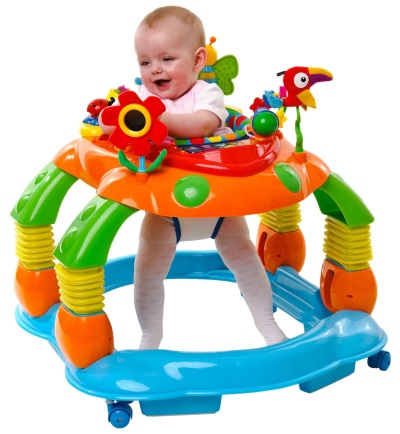When does a baby start to stand?
How many months?
On average, babies begin to stand up on their own by the age of 8 months. At first, this attempts to stand next to the support on the knees, then the child begins to rise on one leg, and finally, holding the support, the crumb confidently stands on both legs.
When the baby releases his hands, he immediately goes down on the buttocks. He continues to "train" - he gets up and falls again - long enough. Sometimes he immediately begins to try to walk along the support.
At first, the baby is very difficult to keep his body in an upright position. He makes a lot of effort to keep his balance and stay on two legs, so most attempts end up falling on the buttocks. But after looking closely, you will notice how joyfully the child learns a new skill and how interesting it is for him to look at everything around him, assuming an upright position.
Opinion E. Komarovsky
The famous pediatrician reminds that children often start to stand, adhering to the support, at 7-9 months, and without support - at 9-12 months. Some completely healthy babies start to stand up later than their peers, for example, if they are very calm or plump. If the doctor says that the child is healthy, there should be no reason to worry.
Often, the child learns to get up, but how to sit back - does not know how. A crumb stands for as long as it can and then falls from fatigue. If, however, such a child is planted, removing the handles from the support, the baby will immediately forget that he is tired and will again begin to reach for the support and stand up. After a while, the child will learn to carefully descend from the standing position. Very soon the crumb will see that he is able to take steps along the support. Gradually he will let go of one hand and will stick to the support with only one hand. So baby learns to walk.
Having learned how to stand up and stand up to a child, parents often think about buying a walker. With this device, the baby can move until it learns to walk. The main purpose of using the walker is to provide the baby with the safe opportunity to move around the apartment, freeing the mother.
Komarovsky does not advise to keep the crumbs in walkers for more than 40 minutes, as I am sure that staying in them does not give anything to the child, but is even detrimental. Child development must occur naturally. In addition, during the crawling to explore the world for the child is much more useful.

What you need to know when the child started to stand?
Karapazu, who learns to stand with and without support, requires more attention than a crumbs, who have not yet begun to try to get up. Since many babies learn to get up faster than they understand how to get back to a sitting position, they really need her mother's help during this period.
You should remember that now your child will get up almost anywhere, so you should be extremely careful and monitor all the actions of the baby, ensuring him maximum safety. The corners of the cabinets and tables, doors, tablecloths and other items can be dangerous for getting up on the feet of the crumbs. In time, hide items dangerous to the baby. The doors of the cabinets at the time can be glued with tape to prevent them from opening by the kid (he can pinch his fingers).
If your baby is less than a year old, he crawls and sits well, but has not yet learned to stand, no need to worry. Each child develops according to his own schedule, and the goal of parents is not to interfere, but not to force, but to support all independent attempts of the child to master new motor skills.
Exercises
A child who has learned how to get up can be stimulated to use this skill more often and quickly move to standing without support with the help of some exercises:
- Offer your child to stand at a support of different heights. When he learns how to stand up well, holding onto a support at the level of his belt, offer a “barrier” higher - at the level of his chest.
- To the child standing at the support, who is holding her hands, give an interesting toy. So you force a crumb to lean against a support by a stomach, and with hands to carry out different manipulations with a toy.
- To teach a crumb to sit in a standing position, you can also use a toy. Put it on the floor next to the standing baby and support the child trying to reach the toy.
- Place the child on the shelves, on the shelves of which place several toys at different heights. The kid will try to get the toy and will begin to rise up and let go of one hand.
- Put the baby at the low table, let him hold on to this table. Around the crumbs lay on the floor a few toys and have your child pick them all up and put them on the table.
- Place a roller between your baby’s legs so that one leg of the child is in front and the other is in the back. Let the crumb try to keep balance in this position.
- Hang the ball next to the support so that it is at the level of the baby's knees. The child will stand at the support and try to football this ball with one foot, transferring the weight of the body to the other.
- You can also practice with the baby on the balancing board.
To stimulate getting up and standing, baby massage is also recommended.











